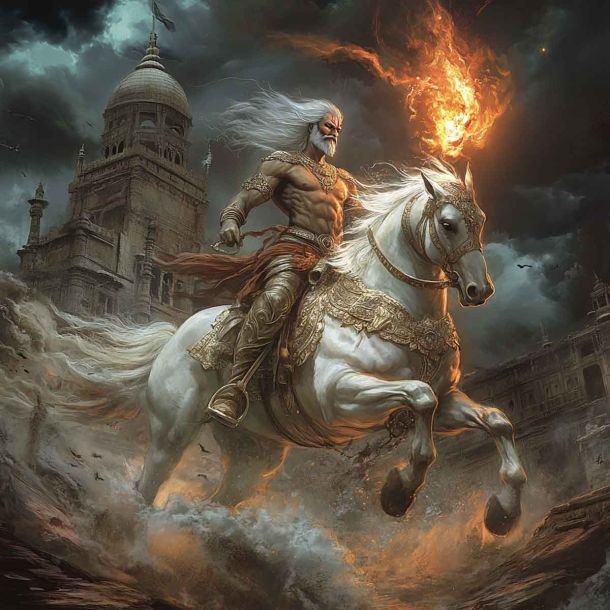More Coverage
Twitter Coverage
Satyaagrah
Written on
Satyaagrah
Written on
Satyaagrah
Written on
Satyaagrah
Written on
Satyaagrah
Written on
Join Satyaagrah Social Media
"There is more power in a good strong hug than in a thousand meaningful words": In Hinduism, we have been communicating with the cow since beginning and ridiculed for that, Guess what? West is now using Cow Hug therapy to cure their stress and anxiety

|
Cow cuddling is believed to promote positivity and reduce stress by boosting oxytocin in humans, the hormone released in social bonding. The calming effects of curling up with a pet or emotional support animal, it seems, are accentuated when cuddling with larger mammals.
This wholesome pastime emerged in rural Dutch provinces more than a decade ago, and is now part of a wider Dutch movement to bring people closer to nature and country life. Today, farms in Rotterdam, Switzerland and even the United States are offering cow-hugging sessions and promoting the activity’s joy-inducing, stress-busting properties.
The cuddling experience can even be pleasurable for the cattle themselves. A 2007 study in the journal Applied Animal Behaviour Science states that cows show cues of deep relaxation, stretching out and allowing their ears to fall back when massaged in particular areas of their neck and upper back.
It seems that heartfelt bonding with bovines may just be what the doctor ordered.
|
People paying $200/hour amid COVID for therapeutic hugs
In this pandemic time when people are finding it difficult to hug each other, some are finding solace in animal cuddling. Cow cuddling which started in the Netherlands is now gaining massive popularity in the United States, with people hugging cows to reduce their stress and anxiety. Widely considered the wellness trend during pandemic times, people who practice it claim that it could promote positivity, and will boost the level of oxytocin in the body.
Cow cuddling grows as a huge business
According to reports, some of the cow cuddling providers are charging $200 per hour of a wellness session. People who promote the study claim that the calming effect of hugging and cuddling small pets like dogs and cats could double when someone cuddles large mammals like cows.
The practice of cuddling cows for relaxation originated in Dutch provinces more than a decade ago, and it started gaining massive popularity in the United States post the coronavirus outbreak when people face difficulties in socializing themselves due to strict Covid restrictions.
The cuddling experience is enjoyable to cows as well. According to a study published in 2007, cows show cues of deep relaxation when massaged in particular areas of the neck and upper back.
|
The popularity of cow cuddling is not just confined to the Netherlands and the United States. Last year, an NGO in Gurugram started a cow cuddling center in India. The cow cuddling by Kamdhenu Gowdham and Arogya Sansthan aimed to provide much-needed relief to people who are stressed due to busy schedules and other lifestyle issues.
The cow cuddling therapy includes, petting and massaging the cow, hugging, and sitting with it, and the ultimate goal is to cuddle the cow, thus forgetting all the problems and rejuvenating the mind.
"Cow cuddling not only cures respiratory diseases, blood pressure, spinal pain, heart problem, depression but also sadness, anxiety and all kinds of tensions," said a statement issued by the Gurugam NGO.
Cows are sacred to Hindus
In India, the cow is considered a sacred animal. She is revered, honored and respected. Here are five reasons cows are considered holy.
Most Hindus are vegetarian and a great deal of Indian cuisine revolves around dairy products. Yogurt, milk, curd, butter and ghee are all mainstays of Indian cooking. In India, when a baby has stopped nursing he/she goes on to be nourished by cow's milk and so the cow is venerated as a mother. In fact, she is seen as a mother to all beings - gentle, kind and nurturing. Many Hindus see killing a cow as equivalent to killing one's own mother. It is considered a cardinal sin and is punishable by law in most Indian states.
The Vedas describe cow’s milk as ambrosial, akin to divine nectar. It is considered to be a sattvic food in Ayurveda and is said to improve meditation practice due to it’s calming effect. Warm milk contains the amino acid, tryptophan, which is a precursor to the neurotransmitter, serotonin, which is responsible for feelings of serenity and well-being.
Vedic rituals prescribe the use of ghee as a libation in sacred rituals such as the Yagna and Homa. These fire rituals are central to Hindu worship and are performed at all important life stages: marriage, the birth of a child, during funeral rites, as well as a part of daily worship. Like milk, ghee is also considered to be a sattvic food. It promotes intellectual acuity and is thought to have invigorating properties. It is commonly used to treat pitta dosha imbalances.
The gentle nature of cows, with their large dark eyes and soft muzzles, evokes a natural sense of calm. Hindus view this kind disposition to be symbolic of ahimsa, or compassionate non-violence. Ahimsa is one of Hinduism’s main tenets and Hindus see cows as a natural embodiment of this virtue. Many gods and goddesses are associated with the cow. The earth goddess, Bhumi, is often depicted as a cow and Lord Krishna is known as Govinda, the protector of cows. Cows represent the dharma and the "Rig Veda" sings her praises, instructing all to keep her safe.
|
Kamadhenu
The bovine goddess, Khamadhenu, also known as Surabhi, is believed to be the mother of all cows. She is abundance incarnate, fulfilling the wishes of her owner, bringing wealth and good fortune. Kamadhenu is also the embodiment of generosity and selflessness. Surabhi is a Sanskrit word that means "the fragrant one”; this is thought to be because of the distinctive sweet smell that cows have. In fact, cow dung is considered pure and is commonly used as fuel and for purification in households across India.
Cows are considered to be auspicious and are said to bring blessings and happiness to those who honor them. You will often see cows with garlands of fragrant marigold flowers and fine stone necklaces. On special occasions their faces and bodies are painted in bright colors and their backs draped with richly embroidered blankets.
Many references to cows and their sacred nature exist in the Vedas and the Bhagavad Gita. Even with just these few examples it’s possible to understand a little bit about the rich history and cultural importance cows have in India.
References:
 Support Us
Support Us
Satyagraha was born from the heart of our land, with an undying aim to unveil the true essence of Bharat. It seeks to illuminate the hidden tales of our valiant freedom fighters and the rich chronicles that haven't yet sung their complete melody in the mainstream.
While platforms like NDTV and 'The Wire' effortlessly garner funds under the banner of safeguarding democracy, we at Satyagraha walk a different path. Our strength and resonance come from you. In this journey to weave a stronger Bharat, every little contribution amplifies our voice. Let's come together, contribute as you can, and champion the true spirit of our nation.
 |  |  |
| ICICI Bank of Satyaagrah | Razorpay Bank of Satyaagrah | PayPal Bank of Satyaagrah - For International Payments |
If all above doesn't work, then try the LINK below:
Please share the article on other platforms
DISCLAIMER: The author is solely responsible for the views expressed in this article. The author carries the responsibility for citing and/or licensing of images utilized within the text. The website also frequently uses non-commercial images for representational purposes only in line with the article. We are not responsible for the authenticity of such images. If some images have a copyright issue, we request the person/entity to contact us at This email address is being protected from spambots. You need JavaScript enabled to view it. and we will take the necessary actions to resolve the issue.
Related Articles
- RTI reply revealed that keys to the treasure room 'Ratna Bhandar' of Puri Jagannath temple which has a lot of gold, silver, and precious jewels donated by devotees and kings over the centuries have been ‘missing’ since 1970: Odisha
- “In the struggle between stone & water, in time, the water wins”: Bharatiya Martial Art | Kalaripayattu is the father of all martial arts in the world, the existence of Martial arts in India for over 3000 years can be proved by its mention in the Vedas
- Maa Annapurna returns to India after 107 years of exile in Canada: Murti will be installed at Kashi Vishwanath Mandir in Varanasi
- Construction of Ram Mandir in Ayodhya is in full flow with the foundation work finished, main contractor for construction is Larsen & Toubro while Tata Consulting Engineers are project management consultant
- Close view of sculpture of Kurmavatara (tortoise incarnation of Vishnu), Garhwa, Allahabad District - 1875
- Hinduism, Hindutva and the Contest for the Meaning of Hindu Identity: Swami Vivekananda and V.D. Savarkar
- PM Narendra Modi inaugurated the Statue of Equality of Sri Ramanujacharya and emphasized 'Progressiveness does not mean detaching from one’s roots and that there is no conflict between progressiveness and antiquity.'
- "Who is Hindu": In real sense, grand tradition can be defined and understood as ten thousand faiths gathered in harmony under a single umbrella is Hinduism, Sanatan Dharma, where dharma is the duty, and karma is our actual behaviour
- Rana Sanga, the symbol of bravery who defeated Sultan Ibrahim Lodhi and fought Muslim Terrorists for Hindu Existence
- Temple city Madurai grandly celebrated the Chithirai festival, devotees thronged streets, got darshan of deities Meenakshi, Sokkanathar, and Kallazhagar: “Govinda” “Hara Hara” chants reverberated in Madurai with pomp
- "Man is made by his belief. As he believes, so he is": United States: 10,000 people gathered at Allen East Center in Texas, to recite the revered Bhagavad Gita together on the occasion of Guru Purnima, event was organised as Bhagavad Gita Parayan Yagya
- Jhalkaribai: The Indian Rebellion Of 1857 Who Took on British Forces Disguised as Laxmibai
- A Different 9/11: How Vivekananda Won Americans’ Hearts and Minds
- "This is our one united Bharat": BJP leader Kapil Mishra floated a fundraiser to help family members of Kanhaiya Lal of Udaipur incident, fundraiser met target of pooling Rs. 1 crore within 24 hours and help still keep pouring in
- Hindu Survival: What Is Needed To Be Done?
























